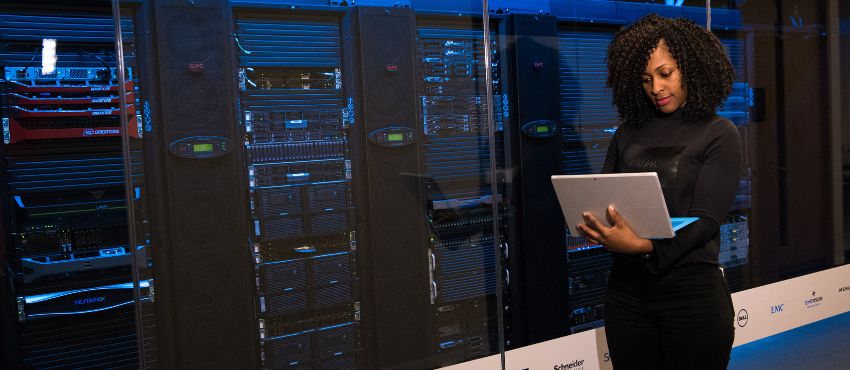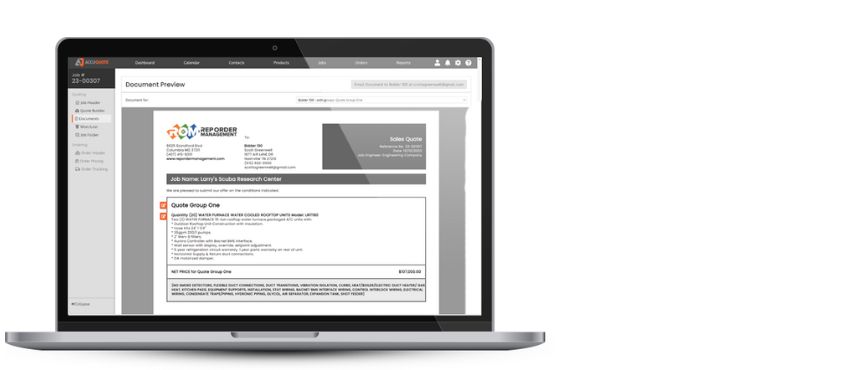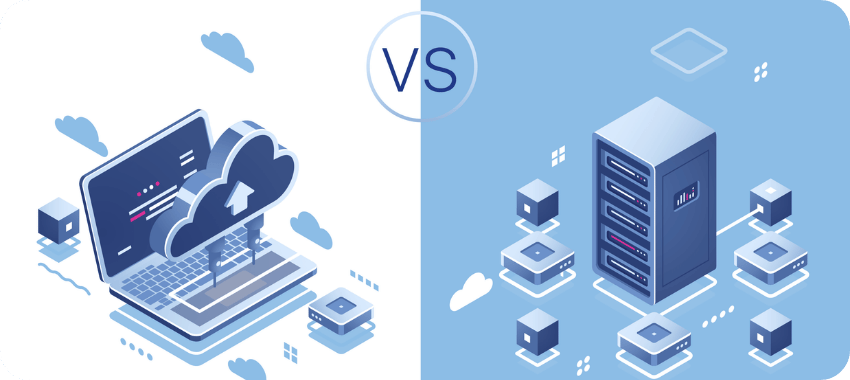Cloud-based vs. On-premise Manufacturer Rep Software
In the manufacturing world, choosing Cloud-based vs. On-premise Manufacturer Rep Software can make a significant difference in your operations. The right software can streamline your processes, improve efficiency, and ultimately boost your bottom line. But how do you decide between a cloud-based solution and an on-premise one? Let’s dive in.
- Cloud-based vs. On-premise Manufacturer Rep Software
- Understanding On-Premise and Cloud-Based Software
- Comparing On-Premise and Cloud-Based Manufacturer Rep Software
- Deployment: On-Premise vs. Cloud-Based Software
- Software-as-a-Service (SaaS) and Cloud ERP
- Flexibility, Reliability, and Security: On-Premise vs. Cloud-Based Software
- Managing Changes to Hardware and Software
- The Future of Manufacturer Rep Software: Trends and Predictions
- Making the Right Choice for Your Business
- In Conclusion
- Common FAQs
Understanding On-Premise and Cloud-Based Software
Before we dive into the specifics, it’s crucial to establish a foundational understanding of what cloud-based and on-premise solutions entail.
On-premise Software: When we talk about on-premise software, we’re referring to a traditional model where the software is installed directly on the company’s servers and computers. This means that all data and applications are stored locally, and the company is responsible for maintaining and updating the software.
Cloud-based Software (SaaS): On the other hand, cloud-based software, also known as Software as a Service (SaaS), is hosted on the provider’s servers and accessed via the Internet. The provider takes care of all maintenance, updates, and security, and users can access the software from anywhere with an internet connection.

Comparing On-Premise and Cloud-Based Manufacturer Rep Software
The debate between on-premise and cloud-based software is a hot topic in the modern manufacturing landscape. Both have merits, but when you delve into the details, cloud-based solutions often come out on top.
On-premise software, the traditional model, involves the software being installed directly on the company’s servers and computers. While this allows for a high level of control and customization, it also comes with its own set of challenges. The company is responsible for all maintenance, updates, and security, which can be resource-intensive. Additionally, the upfront costs for hardware and software licenses can be substantial.
Conversely, cloud-based software, or Software as a Service (SaaS), is hosted on the provider’s servers and accessed via the Internet. This model offers several distinct advantages. First, the provider handles all maintenance and updates, freeing your IT team to focus on other tasks. Second, cloud-based software requires less upfront investment, making it a more cost-effective solution for many businesses. Plus, it’s easier to scale as your business grows, providing the flexibility that on-premise solutions often lack.
Moreover, cloud-based software can be accessed from anywhere with an internet connection, offering unparalleled convenience and accessibility. This can be a game-changer for manufacturers with multiple locations or remote workers.
On-Premise Software vs Cloud-Based Software, A More Detailed Look
Let’s explore various aspects such as installation, maintenance, security, and cost implications to provide a more detailed comparison.
Installation and Setup
- Cloud-based: Quick and easy setup with minimal hardware requirements.
- On-premise: Requires significant hardware setup and IT resources for installation.
Maintenance and Updates
- Cloud-based: Seamless updates and maintenance handled by the provider.
- On-premise: Requires in-house IT staff for ongoing maintenance and updates.
Security
- Cloud-based: Security is managed by the provider, but concerns about data sovereignty may arise.
- On-premise: Full control over security measures, but requires robust in-house security protocols.
Cost Implications
- Cloud-based: Lower initial costs but ongoing subscription fees.
- On-premise: High initial costs, continued cost of maintaining software updates and security, but no ongoing subscription fees.
Table comparing On-Premise Software vs Cloud-Based Software:
| On-Premise Software | Cloud-Based Software | |
|---|---|---|
| Installation | Installed on the company’s servers and computers | Hosted on provider’s servers |
| Maintenance | The company is responsible for maintenance, updates, and security | The provider handles maintenance and updates |
| Cost | Substantial upfront costs for hardware and software licenses | Less upfront investment, more cost-effective |
| Customization | High level of control and customization | Limited customization options |
| Scalability | Limited scalability | Easily scalable as the business grows |
| Accessibility | Limited accessibility, confined to the company’s premises | Accessible from anywhere with an internet connection |
| Convenience | Requires the company’s IT team to handle maintenance | Frees up the IT team, is easier to use |
| Multiple Locations | Limited support for multiple locations | Ideal for manufacturers with multiple locations or remote workers |
While on-premise software still has its place, the benefits of cloud-based manufacturer rep software are hard to ignore. From cost savings and scalability to ease of use and accessibility, cloud-based solutions are increasingly becoming the go-to choice for forward-thinking manufacturers.

Deployment: On-Premise vs. Cloud-Based Software
When it comes to deploying Cloud-based vs. On-premise Manufacturer Rep Software, the processes are quite different.
On-premise software deployment involves installing the software on the company’s own servers and computers. This process can be time-consuming and requires a significant amount of resources, including a dedicated IT team to manage the installation and handle any issues that arise.
In contrast, deploying cloud-based software is typically much simpler. The software is hosted on the provider’s servers, and users can access it online. This means there’s no need for a lengthy installation process, and the software can be up and running in a much shorter time.
The method of deployment can have a significant impact on business operations. On-premise software, with its complex deployment process, can lead to longer downtimes during installation and updates. On the other hand, the simplicity of cloud-based software deployment can allow for quicker implementation and less disruption to business operations.
Software-as-a-Service (SaaS) and Cloud ERP
Software-as-a-Service, or SaaS, is a software delivery model where the software is hosted on the provider’s servers and accessed via the Internet. This is the model used for cloud-based manufacturer rep software.
Cloud ERP, or Cloud Enterprise Resource Planning, is a type of SaaS that’s used to manage and integrate the important parts of a business. This includes everything from inventory and order management to accounting and human resources. ROM falls into both the SaaS and Could ERP categories.
SaaS and cloud ERP offer several benefits for manufacturers. They require less upfront investment than on-premise solutions, and they’re easier to scale as your business grows. The provider handles all maintenance and updates, freeing your IT team to focus on other tasks.
However, there are also drawbacks to consider. SaaS and cloud ERP require a reliable internet connection, and there may be less opportunity for customization compared to on-premise solutions.

Flexibility, Reliability, and Security: On-Premise vs. Cloud-Based Software
On-premise software offers a high level of flexibility, as it can be customized to meet the specific needs of the business. It’s also typically seen as more reliable, as it’s not dependent on an internet connection. However, the company is responsible for all security measures, which can be a significant time and financial burden.
Cloud-based software, on the other hand, offers less flexibility in terms of customization. (Though the need for customization can be heavily diminished by choosing a SaaS provider that has created software that was designed for your industry, Like ROM for HVAC Man Reps). Cloud-based software can be more reliable because the provider is responsible for maintaining uptime and handling any issues that arise. In terms of security, the provider is also responsible for protecting the data, which can benefit companies without a large IT team.
These factors can all impact a manufacturing business differently, and it’s important to consider them carefully when choosing between cloud-based and on-premise software.
Managing Changes to Hardware and Software
For on-premise systems, any changes to hardware or software are typically managed in-house by the company’s IT team. This includes everything from installing new servers to updating the software to accommodate changes in business processes. While this allows for a high level of control, it can also be resource-intensive and potentially disruptive to business operations.
In contrast, changes in cloud-based systems are generally managed by the software provider. This includes hardware upgrades, software updates, and even scaling the system to accommodate growth in the business. This can significantly reduce the burden on the company’s IT team and minimize disruption to business operations. However, it also means that the company has less control over when and how these changes are implemented.

The Future of Manufacturer Rep Software: Trends and Predictions
Several trends are emerging as we look to the future of manufacturer rep software. First, there’s a clear shift towards cloud-based solutions. As businesses become more comfortable with cloud technology and recognize the benefits it can offer in terms of cost, scalability, and ease of use, we can expect this trend to continue.
Second, we’re seeing an increased focus on integration. Manufacturers are looking for software solutions that can integrate with other systems in their business, from supply chain management to customer relationship management. This can help to streamline processes and improve efficiency.
Finally, there’s a growing emphasis on artificial intelligence (AI) and data analytics. Manufacturers are increasingly recognizing the value of the data they collect, and they’re looking for software solutions that can help them analyze this data and gain valuable insights.
In terms of predictions, we can expect these trends to continue and evolve. We may also see continuing developments in areas like artificial intelligence and machine learning, which have the potential to revolutionize the way manufacturers use software. As always, the key for manufacturers will be to stay adaptable and open to new technologies.
Making the Right Choice for Your Business
Selecting the right software depends on various factors unique to your business, such as budget, IT capabilities, and specific business needs. Consider the following when making your decision:
- Assess Your IT Infrastructure: Determine if your current infrastructure supports on-premise solutions or if a cloud-based approach is more feasible.
- Evaluate Your Business Needs: Consider your need for scalability, remote access, and customization.
- Consider Long-term Costs: Analyze the total cost of ownership for both options over time.
- Security and Compliance: Ensure whichever solution you choose meets your industry’s security and compliance standards.
In Conclusion
In our exploration of Cloud-based vs. On-premise Manufacturer Rep Software, we’ve covered a lot of ground. We’ve delved into the basics of each type of software, compared their pros and cons, and examined how they’re deployed and managed. We’ve also looked at the role of Software-as-a-Service (SaaS) and cloud ERP and discussed the importance of flexibility, reliability, and security.
We’ve seen that on-premise software offers a high level of control and customization, but it also comes with higher upfront costs and the responsibility for maintenance and updates. On the other hand, cloud-based software requires less upfront investment, is easier to scale, and the provider handles all maintenance and updates.
Looking to the future, we’ve identified trends towards cloud-based solutions, integration, and data analytics. We’ve also predicted that these trends will continue and evolve, with potential new developments in areas like artificial intelligence and machine learning.
So, what does this all mean for manufacturers considering on-premise vs. cloud-based software? The key takeaway is that there’s no one-size-fits-all solution. The best choice depends on your company’s specific needs, resources, and goals. It’s important to carefully consider all the factors we’ve discussed, from cost and scalability to control and customization.
In the end, whether you choose on-premise or cloud-based software, the most important thing is to choose a solution that supports your business goals and helps you to operate more efficiently and effectively. As the world of manufacturer rep software continues to evolve, staying adaptable and open to new technologies will be key to staying competitive.

